How To Shrink Clothes – 4 DIY Ways To Try At Home
Loose and unflattering garments won't be a problem anymore with these easy-to-follow tips.

Image: Shutterstock
If you want to know how to shrink clothes, then this page is exactly for you. In this article, we are going to acquaint you with some of the most amazing hacks that will help you shrink your clothes in many different ways. Although shrinking a new piece of clothing might not really be the first thing that comes to our minds, at times, it becomes essential as we often get stuck with a top or a shirt that has an extended hemline or is too big. In such cases, explaining what you want to the tailor gets trickier. But don’t worry, our hacks will help. All you will need to do is scroll down to find out how to shrink clothes!
 Ace The Look
Ace The Look- Leather Garments: When shrinking leather, soak it in lukewarm water for no more than 2-3 minutes to prevent the material from hardening.
- Synthetic blends: Turn your synthetic clothes inside out while using high heat to shrink them to prevent the color from fading.
- Pre-Shrunk Clothes: Style your pre-shrunk, ill-fitted kurtis and dresses with belts to accentuate your waist, and opt for military tucking for loose shirts and t-shirts.
- Safety Pins: If you are unable to shrink your clothes, use safety pins to create pleats on them and secure them with a safety pin from underneath.
In This Article
Why Do Clothes Shrink?
Clothes shrink primarily due to exposure to heat, moisture, and friction during the laundering process. Fabrics, especially natural fibers like cotton and wool, consist of long molecular chains. When subjected to hot water, high temperatures, or excessive agitation, these chains can constrict or contract. Additionally, the drying process, especially when using high heat, amplifies this effect. The combination of heat and mechanical action breaks down the structure, causing fibers to tighten and garments to shrink.
You can shrink the clothes by utilizing any of these properties. Check out the methods which you can use to shrink the clothes from the section below.
Key Takeaways
- When soaked in hot water, denim materials may take longer to dry and cotton materials may bleed color.
- Hot water or a hot dryer can be used to shrink clothes, but the time taken and effectiveness can vary depending on the material.
- Silk should be washed on moderate heat without chlorine or bleach.
- Dryers should not be placed too close to polyester garments to prevent static and damage to the fabric.
Ways To Shrink Clothes
- How To Shrink Clothes With Boiling Water
- How To Shrink Clothes Using The Washing Machine And Dryer
- How To Shrink Clothes Without A Dryer
- How To Shrink Clothes With A Hair Dryer
4 Ways To Shrink Clothes At Home
Heat is central to this process as it aids in shrinkage i.e., contraction of the fibers of the apparel. If you are wondering how to shrink clothes at home, the following tips may work, but it is important to note that the reduction in the size and fit of your laundry may not be exactly as desired. It may also ruin your clothes, hence appropriate pre-shrinking care and maintenance must be followed. It might be a trial-and-error affair and adjustments at different steps may be needed. Moreover, certain fabrics may have undergone a shrink-proofing process and might not show good results. Michelle Wagman, a professional stylist, adds, “Keep in mind when it comes to shrinking clothes – firstly, you’ll want to check the care label on the garment to see if it’s safe to shrink.”
1. How To Shrink Clothes With Boiling Water
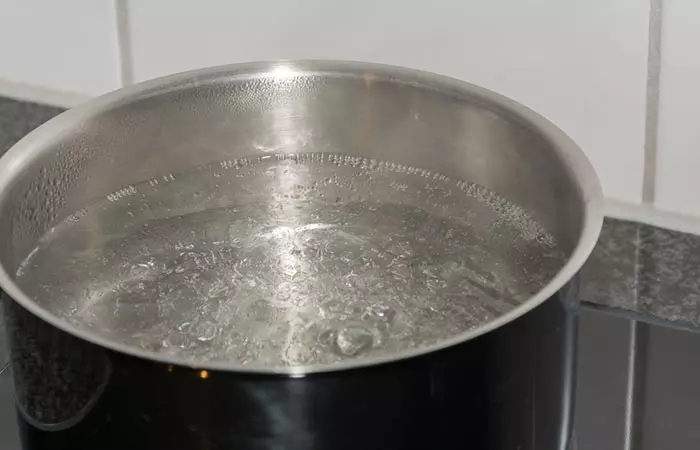
- Bring a large pot of water to boil.
- Put in the garment you are trying to shrink, and turn off the heat. Use a wooden spoon to ensure the garment is entirely immersed.
- Leave the garment in for about 5-7 minutes, depending on the material.
- Let it cool off before you take it out and wring it out to check how much it shrank.
- Put it in a dryer or hang it to dry on a clothesline.
Things To Remember
- Cotton – Cotton shrinks easily and also sometimes bleeds color when compared to other fabrics. So, make sure that you keep them separately, especially if you have whites in there.
When exposed to heat, like in boiling water, the fibers naturally contract. The combination of moisture and heat causes cotton to tighten, resulting in shrinkage. Since cotton fabrics, especially knitted varieties, have excellent elasticity, they may shrink differently based on their structure, with knitted fabrics potentially shrinking more in length (1). - Polyester – Shrinking polyester is relatively tricky because it does not shrink quickly like cotton. However, the procedure remains the same. You just might have to repeat this process a few times because these take a while to shrink. Polyester fibers have a more stable polymer structure, which means they resist heat-induced shrinkage more effectively (2).
- Denim – Wondering how to shrink jeans? So, here is a tip. Denims take much longer than cotton to shrink. So, roll your jeans, denim jacket, etc. and throw them into the pot of boiling water. Let the garment boil in there for 20-30 minutes before you turn off the heat. Let them cool off, wring them, and then hang them to dry.
- Silk – Silk is protein fiber and shrinks the minute it is exposed to higher heat in any form, which means it takes lesser time for it to contract. Place the garment in boiling water, and turn off the heat immediately. Let it cool off before you hang it dry.
Jackie, a blogger, boiled some thrift store clothes that were too large for her in water to reduce their size. She writes, “I didn’t notice amazing shrinkage. The only thing that shrunk significantly were the jeans but they were 1% spandex so they shrink significantly at every wash. After wearing those jeans, I determined that the shrinkage was not permanent anyway (i).” She adds that she boiled the jeans separately as its color may run.
 Quick Tip
Quick TipDrawbacks:
- Prolonged exposure to boiling water may weaken some fabrics, especially delicate ones like silk or wool, leading to permanent damage.
- Dark-colored clothes may bleed, staining lighter items in the water. It is essential to separate clothes based on color.
- You have less control over how much the garment shrinks, and it may not shrink uniformly, especially with materials like polyester or denim.
2. How To Shrink Clothes Using The Washing Machine And Dryer
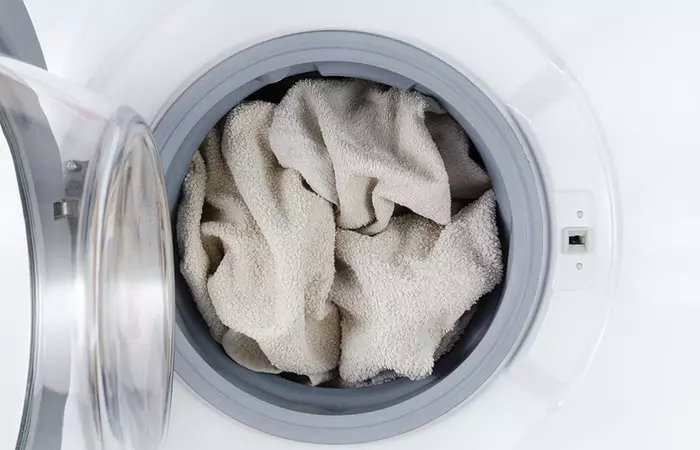
- Throw in the garments that you want to shrink in the washer.
- Put it in the hot water setting.
- Set the program for the longest cycle.
- Take them out and put them in the dryer.
- Select the highest heat setting for the dryer too.
Things To Remember
- Silk – Silk fabrics shrink easily and lose their shine if they are constantly exposed to high heat. So, always use a mesh and run them in a moderate heat setting while washing. They can shrink quickly, so use a delicate heat setting while drying too. Avoid using chlorine or bleach-based detergents while washing silk garments because they take away the sheen.
- Denim – Denim can take high heat, so you can use the highest setting. Even better if your washer has a denim setting. You might have to repeat it for a couple of times to see visible results.
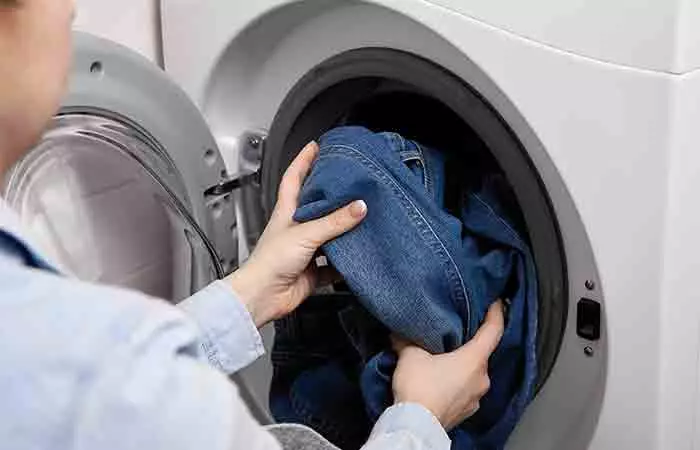
- Polyester – Polyester garments also can be set to highest temperatures, but be doubly sure about the quality of the fabric first because high heat can make them look worn out pretty quickly.
- Cotton – Cotton’s ability to shrink is mainly driven by its high moisture absorption and cellulose content. When washed in hot water, these fibers contract, leading to shrinkage. Knitted cotton, known for its stretchiness, tends to shrink more in length than width, and its elastic nature might allow it to recover slightly after being stretched. Woven cotton is less elastic and shrinks more uniformly (1). If it is a delicate piece of clothing you are trying to shrink, go with a lesser setting first and then repeat if required.
 Quick Tip
Quick TipDrawbacks:
- High temperatures can cause wear and tear, especially on garments made of synthetic fabrics, which may lose their elasticity over time.
- Repeated washing at high temperatures can cause colors to fade, particularly for fabrics like cotton or delicate synthetics.
- There’s a risk of shrinking your clothes too much, making them unwearable.
3. How To Shrink Clothes Without A Dryer
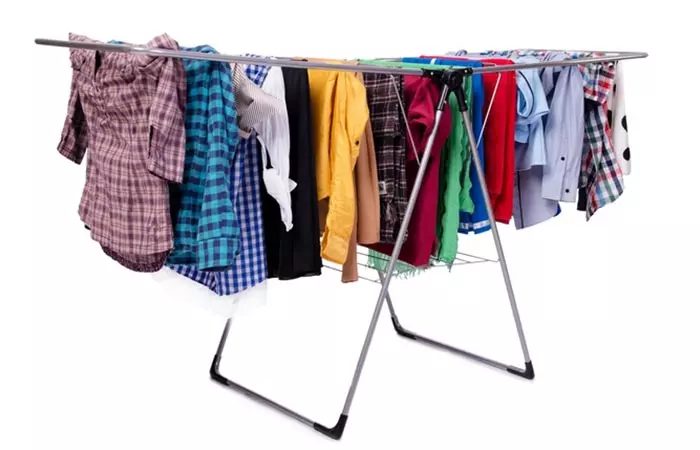
- Throw in the garments that you want to shrink in the washer.
- Put it in the hot water setting.
- Set the program for the longest cycle.
- Take them out, wring them, and hang them to dry. You don’t need a dryer for shrinking clothes as long as you wash them in high temperatures.
Things To Remember
- Cotton – Avoid putting colored cotton clothes in direct sunlight, but hang them where there are enough sunshine and heat. You won’t have this issue for whites. The natural bending tendency of cotton, combined with exposure to sunlight and heat, makes it prone to shrinking (1).
- Polyester – Polyester is the easiest to maintain, and wash too. Just let it air dry on a clothing line and you are sorted. Repeat the procedure if need be.
- Denim – Since you are not going to use a dryer, run the washer at the highest heat setting.
- Silk – It is best for you to avoid drying silk garments in a dryer. So, take it out of the washer and avoid squeezing it too much. Let any excess water drip naturally. Put it on a hanger and let it air dry.
Drawbacks:
- Shrinkage can be uneven. Parts of the garment may shrink more than others, leading to distortion.
- Depending on the climate and fabric, it can take longer for clothes to dry properly, leading to the possibility of clothes staying damp for longer periods.
- If clothes are hung too tightly or weighed down during drying, they may stretch instead of shrinking, particularly for lightweight or stretchy fabrics.
4. How To Shrink Clothes With A Hair Dryer

- Throw in the garments that you want to shrink in the washer.
- Put it in the hot water setting.
- Set the program for the longest cycle.
- Take them out, and wring them to remove any excess water.
- Sometimes, you might have a time crunch or the weather might not be favorable. Don’t worry, we have a workaround for that too.
- Take out your hair dryer, and put it on the highest possible heat setting. Spread the garment on a flat surface or an ironing board.
- Focus on one part at a time and let it dry out.
- This is slightly more time consuming than the other methods, but effective because of the hot air from the dryer.
Things To Remember
- Cotton – Cotton, linen, and other delicates are the easiest to shrink and the fastest with a hair dryer. The heat from the dryer activates the cotton’s natural shrinkage properties. As the cellulose fibers contract, they tighten up, causing the fabric to shrink (1).
- Polyester – Just do not put the dryer too close to the garment to avoid static. While polyester fibers are less prone to shrinking, they may still experience some slight shrinkage or tightening at the edges when exposed to heat. This is typically less noticeable than with natural fibers (2).
- Denim – Denim takes much longer than your regular garments, but it’s your best bet.
- Silk – Silk shrinks and reacts faster to heat, so like we discussed, it’s best to air dry your silk garments.
Drawbacks:
- The direct heat from a hair dryer can potentially burn or damage fabrics like silk or polyester if held too close.
- It is hard to get consistent results with this method, as certain areas of the garment may shrink more than others, leading to distortion or uneven fit.
- Using a hair dryer on synthetic fabrics, like polyester, can cause static electricity to build up, which may make the garment stick to your skin or attract dirt.
Infographic: Dos & Don’ts Of DIY Clothes Shrinking Methods
All the methods above are quite easy and super convenient to try. You just need to be mindful of a few things like handling hot water and certain types of fabrics.
We have highlighted the dos and don’ts of each method in an infographic below for your quick reference. Check it out!

Illustration: StyleCraze Design Team
Isn’t shrinking clothes easier than you thought? It sure is. And the best part is that the tools required for the process are readily available in your house. You can either shrink them using boiled water or the washing machine and dryer. Even a hairdryer can do the job perfectly. So, now that you know how to shrink clothes following the many methods that we have explained above, your days of worries are over. Next time you purchase clothes and find out that they are oversized, you know what to do!
Frequently Asked Questions
How to care for shrunk clothes?
Use cold water to wash your shrunk clothes. Always air dry your clothes and use a fabric conditioner to preserve their shape. In addition, store your shrunk clothes flat rather than hanging them to prevent stretching.
Why do clothes shrink and stretch?
Heat is the primary cause of our clothes shrinking. Throwing in everything inside the washer and washing with hot water, and then putting them all into the dryer with a high heat setting can sometimes not just shrink your clothes considerably, but also ruin them. Delicates, whites, linens, and cotton are not meant for the dryer unless you want to shrink them specifically. It’s always best to air dry them if you have a choice or run them in the lowest heat setting.
How to shrink clothes without them losing color?
• Add salt to the water while washing clothes, the salt helps to lock the dye in.
• Air dry the clothes in the shade because exposing them to the sunlight can cause the colors to fade.
• Use color protecting detergents while washing them.
How to stretch shrunken clothes?
• Fill up a bucket with lukewarm water.
• Add fabric conditioner to it and soak the clothes for about 30 minutes.
• Rinse off using regular water and hang them to dry. Needless to say, avoid the dryer.
What fabric shrinks in hot water?
Natural fibers such as linen, wool, cotton, and silk are highly prone to shrinking in hot water.
Want to shrink a shirt to make it fit you without ruining it? Click on the video below for quick and easy steps to make your shirt fit perfectly.
Personal Experience: Source
StyleCraze's articles are interwoven with authentic personal narratives that provide depth and resonance to our content. Below are the sources of the personal accounts referenced in this article.
i. How to shrink really big clothes: does boiling work?https://growingourgreenbeans.wordpress.com/2012/11/26/how-to-shrink-really-big-clothes-does-boiling-work/
References
Articles on StyleCraze are backed by verified information from peer-reviewed and academic research papers, reputed organizations, research institutions, and medical associations to ensure accuracy and relevance. Read our editorial policy to learn more.
- Improving the functionality of raw cotton: simultaneous strength increases and additional multi-functional properties
https://pmc.ncbi.nlm.nih.gov/articles/PMC7404539/ - Changes in Mechanical Properties of Fabrics Made of Standard and Recycled Polyester Yarns Due to Aging
https://pmc.ncbi.nlm.nih.gov/articles/PMC10708220/
Read full bio of Michelle Wagman
Read full bio of Pratima Ati
Read full bio of Shatabdi Bhattacharya
Read full bio of Srijita De








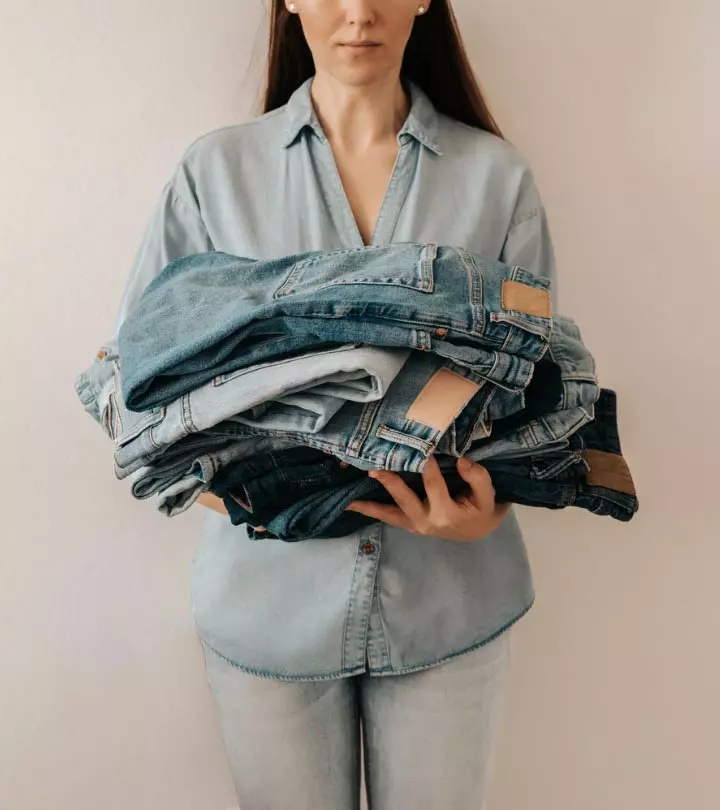



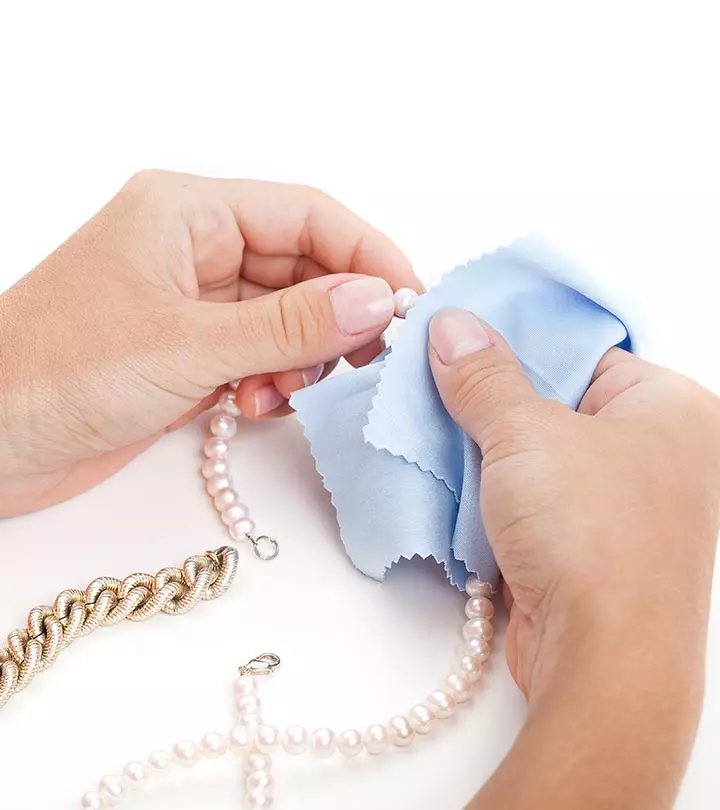
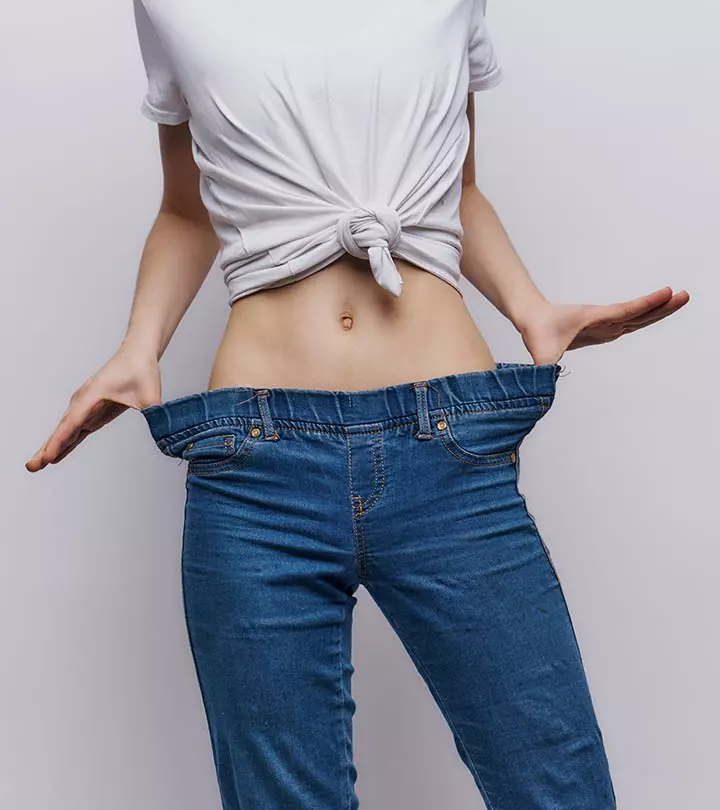









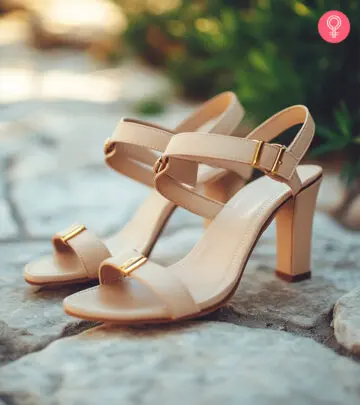




Community Experiences
Join the conversation and become a part of our empowering community! Share your stories, experiences, and insights to connect with other beauty, lifestyle, and health enthusiasts.